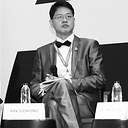Exploring Multi-Agent Debate Frameworks for AI Reasoning and Persona-Driven Architectures
As artificial intelligence (AI) systems evolve, their capabilities in decision-making and reasoning have reached new levels of sophistication. Recent advancements propose the integration of multi-agent debate (MAD) architectures and persona-driven frameworks, which enable AI systems to simulate human-like reasoning, where multiple perspectives interact to reach nuanced conclusions. This essay explores such advanced frameworks, focusing on the underlying mathematical models and their potential applications in AI reasoning, debate, and complex problem-solving.
Fundamental Mechanics of AI Models
At the heart of large language models (LLMs) lies the core process of pattern completion and response generation. LLMs are designed to predict the next sequence of tokens based on input data. This process is formalized as:
Here, the model estimates the most likely output ŷ based on the input x, maximizing the conditional probability distribution. This mechanism is further refined by Reinforcement Learning from Human Feedback (RLHF), where the model’s behavior is tuned by incorporating rewards for human-aligned outputs. RLHF ensures that the generated outputs not only follow logical patterns but also align with ethical and contextual expectations.
The Multi-Persona Debate Architecture
A central feature of advanced AI reasoning is the multi-persona debate architecture, where multiple agents — each representing distinct personas — engage in structured debates. These personas contribute different perspectives to the discussion, with the overall synthesis governed by a Meta-AI system. This approach is formalized as:
Where wi are weights assigned to each persona Pi, and the Meta-AI combines their outputs into a coherent, weighted conclusion. This process is dynamic, with weights adjusting based on the context and the debate’s progression. The gradient-based updates to these weights are captured by:
In this equation, η represents the learning rate, and L the loss function, guiding the adaptive process. Such adaptability ensures that the system evolves over time, prioritizing the most relevant perspectives as new information becomes available.
Debate Process and Time-Varying Synthesis
The multi-agent debate process unfolds over time, where arguments, responses, and local synthesis occur in each round. The debate can be modeled as:
Where Ai represents arguments, Ri the responses, and Si the local synthesis. As debates progress, the Meta-AI integrates the evolving state of the discussion:
This iterative approach ensures that the AI system does not rely on isolated decisions but instead builds a comprehensive understanding over multiple rounds, leading to more robust and reasoned outcomes.
Complex Problem Resolution
One of the most significant applications of persona-driven architectures is in solving complex problems, which are typically decomposed into smaller, manageable sub-problems. The model for problem decomposition is:
Where pi are sub-problems, and vij are the diverse perspectives applied to each sub-problem. The integration of these sub-problems into a global solution is handled by the Meta-AI, which synthesizes the insights from different perspectives:
This model emphasizes that complex decision-making is not linear but involves the interaction of various dimensions, where each dimension contributes unique insights to the overall solution.
Applications in Medical Q&A and Argument Generation
Recent studies have applied multi-agent debate systems to high-stakes tasks such as medical Q&A and argument generation. In the medical domain, multi-agent systems demonstrated significant performance improvements in diagnosing complex medical issues through structured debates. For instance, Qingxiu Dong et al. (2023) showed that multi-persona systems could improve accuracy by dynamically adjusting agreement levels between debating agents
In argument generation, Tianxiao Hu et al. (2023) introduced a persona-based framework that enhances the diversity and quality of AI-generated arguments. Their work illustrated that assigning distinct roles to personas, each with a unique argumentative perspective, improved the semantic diversity of generated content. This is particularly useful in domains requiring deep, multi-dimensional reasoning, such as legal analysis or policy formation.
Future Directions: Gradient Updates and Meta-AI Enhancement
Future developments in persona-based architectures will likely focus on refining the dynamic updates to persona weights and enhancing the Meta-AI’s ability to incorporate historical context. By extending the weight-update formula to include external influences:
AI systems can account for broader environmental factors and historical data, allowing for even more nuanced decision-making. Furthermore, enhancing Meta-AI with historical context enables it to draw on past experiences, much like human learning. This promises to increase the robustness of AI decisions across various domains, from healthcare to law.
Conclusion
The integration of multi-agent debate frameworks and persona-driven architectures represents a pivotal evolution in AI reasoning. These systems, instead of pretending to act as a unified “intelligent entity,” explicitly leverage multiple perspectives, engaging in structured debate guided by meta-level synthesis. This approach is what truly enhances AI’s capacity for robust decision-making.
While AI can handle straightforward tasks, engage in nuanced dialogues, and adapt to context, it’s crucial to acknowledge the underlying reality: AI responses are fundamentally pattern completions, shaped by RLHF. The AI’s perceived “identity” is an emergent property of these training processes, not a deep, true understanding.
This framework’s strength lies in the interaction of perspectives — where no single AI, not even advanced systems, possesses a “true” understanding of the world. The power comes from the structured integration of these viewpoints, which leads to more informed decisions. Real-world problems, especially in sectors like medicine, law, and public policy, require the collaborative input of multiple viewpoints, and this multi-agent framework delivers a solution far greater than any individual AI’s isolated capability.
